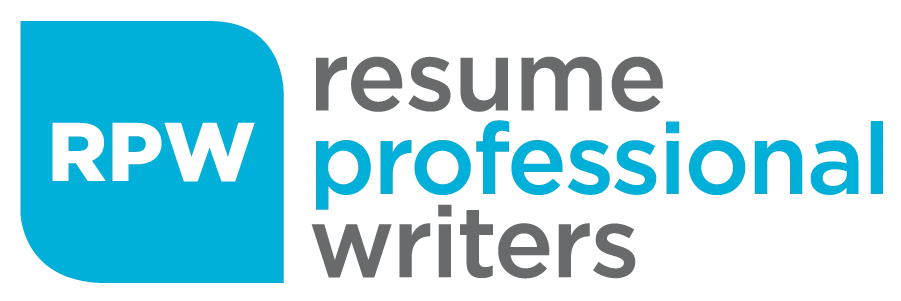A teen’s well-crafted resume can be the key difference between catching an employer’s eye or getting lost in the pile. Picture a student who hosted a schoolwide canned food drive and collected over 400 cans in just one month – that kind of achievement stands out on paper.
Starting a resume early helps teenagers learn to showcase their accomplishments. They can reflect on their skills, experiences, and future goals. The ideal resume length should be one page when applying to part-time jobs, internships, or academic programs. Students should include their paid, unpaid, and volunteer experiences with specific numbers whenever possible.
This complete guide to crafting a resume for teens shows you everything you need to create an impressive resume that gets results. Readers will find expert tips and real examples to build a resume that opens doors to exciting opportunities. The guide covers format selection, ways to highlight educational achievements, and methods to showcase relevant experience—even with limited work history.

Choose the Right Resume Format for Teens
Teens entering the job market need to pick the right resume format. A good format shows your strengths and downplays areas where you might lack experience.
Functional vs. Chronological vs. Combination Format
Teens can make better choices about presenting their qualifications by learning about these three main resume formats:
Chronological format lists work experience in reverse order, starting with your latest position. This classic approach gives employers a clear view of your work timeline and remains the most popular resume type. The layout starts with a career summary and continues with detailed work experience, education and skills sections.
Functional format puts the spotlight on your skills and abilities instead of work history. A resume for teens using this format showcases what you can do rather than when and where you worked. This format starts with a resume summary of your skills and continues with sections about your accomplishments and abilities. A brief work history appears at the bottom.
Combination format (also called hybrid) blends features from chronological and functional resumes. This adaptable style puts your skills section up front while keeping a reverse-chronological work history below. Career experts say that “most teens should use the combination resume format” because it provides “the best of both worlds”.
When to Use Each Format as a Teenager
Your background as a teen job-seeker helps determine which format works best:
Choose chronological format when:
- You’ve had steady part-time work in similar roles
- Your past jobs relate to the position you want
- You want to show career growth in one organization
Choose functional format when:
- You have little formal work experience
- You’re starting your first job
- Your skills outshine your work history
- You gained experience through volunteering, projects, or activities
Career coaches often recommend the functional format when creating a resume for teens because it emphasizes skills and abilities over formal work experience. This format highlights what teens have learned from extracurricular activities, school projects, or personal interests—making it ideal for showcasing potential even with limited job history.
Choose combination format when:
- You have some relevant work experience and transferable skills
- You want to feature both skills and work history
- The job needs specific technical abilities
Resume Template for Teens: What to Look For
Your resume’s look matters just as much as what’s in it. Teenagers should look for these features in a resume template:
Simplicity and professionalism: Clean, straightforward designs work better than fancy graphics or unusual colors. This makes your resume look more mature and ready for work.
ATS compatibility: Companies use Applicant Tracking Systems to review resumes. Templates should work with these systems by keeping formatting simple and avoiding tables or graphics.
Traditional fonts: Professional options like Times New Roman, Calibri, or Arial work best. Use 10-12 point size for content and 13-14 point for headings.
Proper spacing: A 1-1.15 line spacing with one-inch margins creates enough white space to make reading easier.
Length: One page is “perfect for a teenager” who’s just starting out.
Effective templates for a resume for teens should include dedicated sections for education, skills, and activities—areas where teens often shine brighter than in traditional work experience. These sections help highlight strengths that truly reflect their potential.
Add Your Contact Information and Resume Objective
Employers form their first impression of teen job seekers from the contact information and resume objective at the top of their resumes. These elements show your professionalism and career goals before anyone looks at your skills or experiences.
What to Include in Your Contact Section
Hiring managers need a clear, professional way to reach you for interviews. Your contact details should stand out at the top of your resume:
- Full name (first and last)
- Phone number (set up your voicemail first)
- Email address
- City and state of residence (street address optional)
- LinkedIn profile or relevant social media (if applicable)
Your email address must look professional when you apply for jobs. “MrSlamDunk5001@gmail.com” might work with friends but won’t impress employers. A simple email like firstname.lastname@gmail.com or hire.firstname@gmail.com works better.
Social media profiles should only showcase qualifications that match the job you want. A resume for teens can be supported by a LinkedIn profile, which works best for career purposes. Instagram might help aspiring artists or designers show their work. Make sure your online presence stays professional without any questionable content.
How to Write a Strong Teen Resume Objective
A resume objective is a short statement (2-3 sentences) that shows your goals and what you’ll bring to the company. Unlike a summary of past achievements, an objective looks forward and fits entry-level positions perfectly.
Your objective should:
- Start with strong adjectives that show enthusiasm (enthusiastic, dedicated, energetic, self-motivated)
- Include your educational status (high school student/graduate)
- Show relevant skills or experiences
- Match your abilities to the job
- Tell employers what value you’ll add
Each position needs its own customized objective using words from the job posting. Keep it short but powerful—skip first-person pronouns and focus on how your qualifications line up with what they need.
Sample Resume for Teenager First Job: Objective Examples
These examples show how objectives can work in different jobs for a resume for teens:
For retail positions: “Detail-oriented and reliable high school student with a passion for fashion seeking an entry-level position in retail sales. Math-oriented with good attention to detail and committed to providing excellent customer service.”
For babysitting/childcare: “Responsible babysitter with experience caring for children during weekends, evenings, and summer breaks. Skilled in creating fun, engaging, and educational activities while prioritizing children’s safety and well-being.”
For fast food/restaurant work: “Dedicated high school student interested in expanding skills in food service. Focused, attentive, and good with numbers. Hard-working and quick to learn, ready to help in an ever-changing environment.”
For office/administrative positions: “Self-motivated high school graduate with three months of administrative experience seeking assistant role. Skilled in MS Office, with strong attention to detail and ability to work in teams.”
For internships: “Responsible and ambitious student (3.8/4.0 GPA) with excellent time management. Ready to apply customer service abilities and project planning skills to the Business Development summer internship at your company. Strong communication skills and work ethic will help your company meet its milestones.”
Your objective should match your experience level and the job requirements. This section introduces you to potential employers, so make every word count by highlighting relevant skills and genuine interest in the position.
Highlight Your Education and School Achievements
The education section serves as the life-blood of a strong resume for teens who have limited work experience. Employers can see academic achievements, relevant coursework, and extracurricular activities that showcase valuable skills through this section.
How to List Your High School and GPA
Your education section should stand out on your teen resume, especially if you haven’t worked much. List your high school’s complete name, location (city and state), and expected graduation date. Here’s what it should look like:
“South Culver High School, Culver City, CA
Expected graduation: June 2026″
Your GPA deserves a spot on the resume if it’s 3.5 or higher because it shows your strong academic performance and work ethic. Students with GPAs below 3.5 should highlight other academic strengths instead. Write your GPA as “GPA: 3.8/4.0” to make the scale clear.
Relevant Coursework and Academic Awards
A teen resume becomes stronger when it includes relevant coursework that shows applicable knowledge and skills. This addition proves valuable especially when you have limited work experience. Here’s how to list your coursework:
- Choose 3-5 courses that directly relate to the job you want
- You might need to rename courses if their official titles don’t clearly show relevant skills
- Add coursework as bullet points under your education section or create a separate “Relevant Coursework” section
Academic achievements and awards boost your resume by showing excellence beyond simple requirements. Here are some notable examples:
- Honor roll or dean’s list recognition
- Academic competitions or scholarships
- National Honor Society membership
- Subject-specific awards (e.g., “Outstanding Math Student”)
- Perfect attendance records
Extracurriculars That Show Leadership or Teamwork
Your extracurricular activities prove you have skills that employers value. These activities show you know how to manage time, stay dedicated, and handle multiple responsibilities.
Pick extracurriculars that match your target position. To name just one example, see how student government experience shows leadership, organization, and communication skills. Playing sports, particularly in captain roles, proves your teamwork abilities and dedication.
Make your involvement stand out with specific details:
- List your leadership positions (President, Captain, etc.)
- Show time commitments (“3 years on varsity swim team”)
- Include measurable accomplishments (“Coordinated fundraising that raised $10,000”)
These activities can fill in for limited work experience by highlighting transferable skills that apply to professional settings.
Showcase Experience: Jobs, Volunteering, and Projects
Writing the experience section of your teen resume can be tough, especially when you don’t have much work history. The good news is you can showcase your skills and accomplishments in many different ways.
Resume for Teens with No Experience: What to Include
Your resume can highlight several experiences that show you’re ready for work, even without a traditional job:
- Volunteer activities
- Extracurricular activities
- Personal projects
- Freelancing
- Job shadowing
Simple jobs like babysitting, pet sitting, lawn mowing, or snow shoveling count as great experience. These activities show employers you’re responsible, have a strong work ethic, and can finish tasks – qualities they value in young applicants.
How to Describe Part-Time or Informal Jobs
Make your informal jobs sound professional by following this format:
- List your title (e.g., “Babysitter”)
- Add “Self-Employed” as company name and your location
- Include work period (months/years)
- Use 4-6 bullet points describing responsibilities
- Highlight a key achievement
Here’s a good example: “Babysitter, Self-Employed, Seattle, WA June 2023–Present
- Cared for children aged 2-10 during evenings and weekends
- Tutored grades 3-5 children with homework and test preparation”
Using Action Verbs and Quantifiable Results
Strong action verbs make your experience stand out better than phrases like “responsible for” or “tasked with”. Start each bullet point with powerful verbs such as:
- Created/Designed/Developed (for creative work)
- Managed/Coordinated/Led (for leadership roles)
- Helped/Assisted/Supported (for supporting roles)
- Calculated/Analyzed/Determined (for technical tasks)
Numbers help show your achievements clearly. Use dollar amounts, percentages, or specific numbers to show your results. A good example would be “Organized birthday parties for 10 pre-school children” or “Generated $10,000 through fundraising initiatives”.
Teenager Resume Examples: Experience Section Tips
Your experience section will stand out if you:
- Match each entry to the job you want
- List your positions from newest to oldest
- Keep older positions brief
- Show how your activities relate to the job
- Point out skills from school projects or volunteer work that fit the role
Start by listing all your skills. Pick the ones that match what the job posting asks for. Remember that your people skills and tech knowledge are often your strongest assets as a teen.
Add Skills, Certifications, and Extra Sections
Your resume can stand out from other teenage job seekers with skills, certifications, and extra information beyond the simple sections. These elements showcase your capabilities that might not show up in your work experience.
Top Soft and Hard Skills for Teen Resumes
Employers value both technical abilities and people skills in teen applicants. LinkedIn’s Global Talent Trends shows that 67% of hiring managers want critical thinkers on their teams. Communication skills are very important too – listening (74%), effective communication (69%), and interpersonal skills (65%) top the list of most-wanted qualities.
Key soft skills to include:
- Dependability (Monster’s Future of Work survey ranks this as the top skill and biggest skills gap)
- Communication (written and verbal)
- Teamwork and collaboration
- Problem-solving and critical thinking
- Flexibility and adaptability
- Time management
- Leadership
Valuable hard skills for teens:
- Microsoft Office Suite (Word, Excel, PowerPoint)
- Social media management
- Basic coding (HTML, Python, Java)
- Graphic design (Adobe Photoshop, Canva)
- Data analysis (Excel, Google Sheets)
- Typing speed
- Language proficiency
Certifications That Boost Your Resume
Certifications show your initiative and deepen your commitment to professional growth. A 2024 National Association of Colleges and Employers survey reveals that 89% of employers prefer candidates who show technical skills alongside academic credentials.
Teens can access these affordable or free certifications:
- Google Fundamentals of Digital Marketing (40 hours, self-paced)
- Harvard CS50x: Introduction to Computer Science (via edX)
- IBM AI Fundamentals for Students (12 hours)
- Microsoft Office Specialist certifications
- First Aid/CPR certification
List your certifications with the full title, issuing organization, and completion date. You can also add predicted completion dates for certifications you’re working on.
Optional Sections: Languages, Hobbies, and Interests
Foreign language proficiency becomes especially valuable when you have a teen resume. Rosetta Stone’s survey reveals that 35% of hiring managers more likely offer jobs, schedule interviews, or recommend promotions based on second language skills.
Use these consistent terms to show your language skills:
- Native/Bilingual
- Professional Working Proficiency
- Limited Working Proficiency
Your hobbies and interests can make your resume stronger if you choose them strategically. Volunteer work and community service boost your employment chances by 27%. Writing/blogging, language learning, photography, sports, and reading also help you stand out.
Stay honest about your interests and add specific details rather than generic descriptions to catch employers’ attention.
Take Your Teen Resume to the Next Level
A well-crafted resume is vital for teenagers stepping into the job market, whatever their professional experience might be. Of course, building a resume helps teens develop significant self-assessment skills and organize their achievements in a way that catches employers’ attention. On top of that, it helps young job seekers build solid resume-writing habits early for future career growth.
This piece covers several key parts of creating a teen resume. The right format—chronological, functional, or combination—sets the base to showcase relevant strengths. A professional contact section and clear resume objective make that vital first impression and show clear career goals. School achievements, after-school activities, and even casual work turn into valuable resume content when written with action verbs and real numbers.
Skills and certifications help teen applicants stand out from others. A mix of soft skills (communication, dependability, teamwork) and hard skills (technical abilities, language proficiency) shows immediate value to employers. The right hobbies and interests can reveal personality traits that fit well in the workplace.
Note that creating a resume is an ongoing process, not just a one-time task. Once the original document is ready, teens should revise and customize it for specific jobs. Getting feedback from teachers, parents, or career counselors shows where they can improve.
A teen’s first resume begins their professional growth. Using the strategies in this piece helps teens create documents that show what they can do, even without much work history. These resumes will lead to valuable experiences that build toward career success.
Want to raise your teen’s job prospects? Work with professional resume writers to create a compelling, results-driven resume that stands above the rest.








